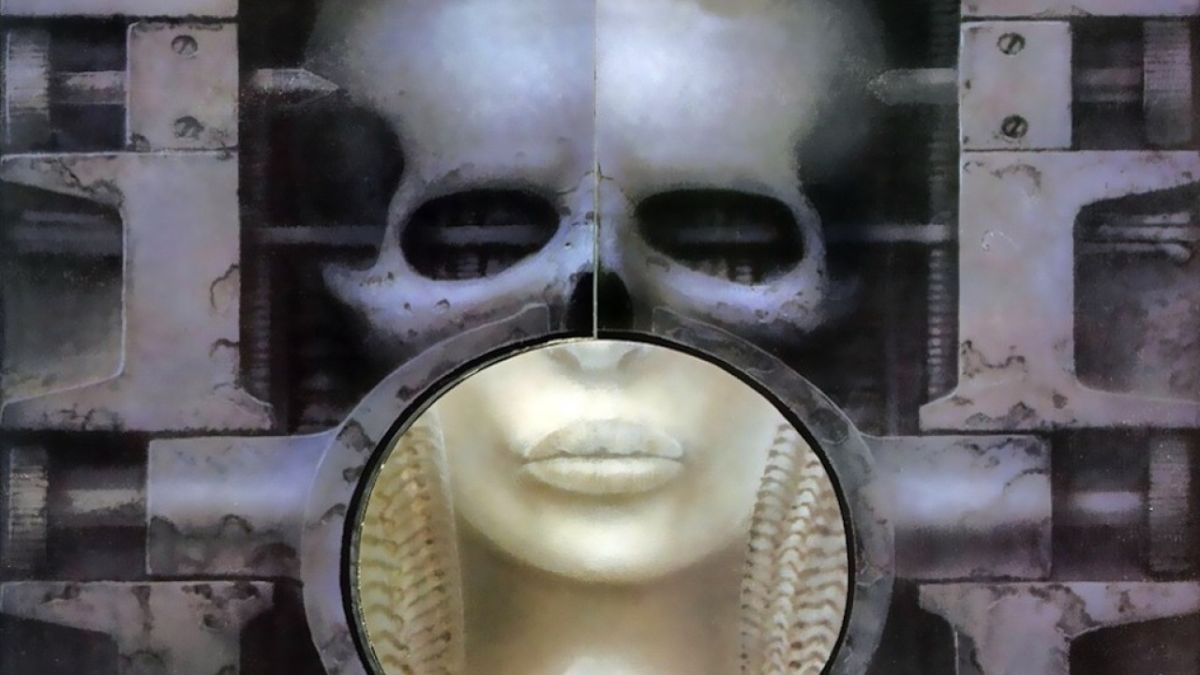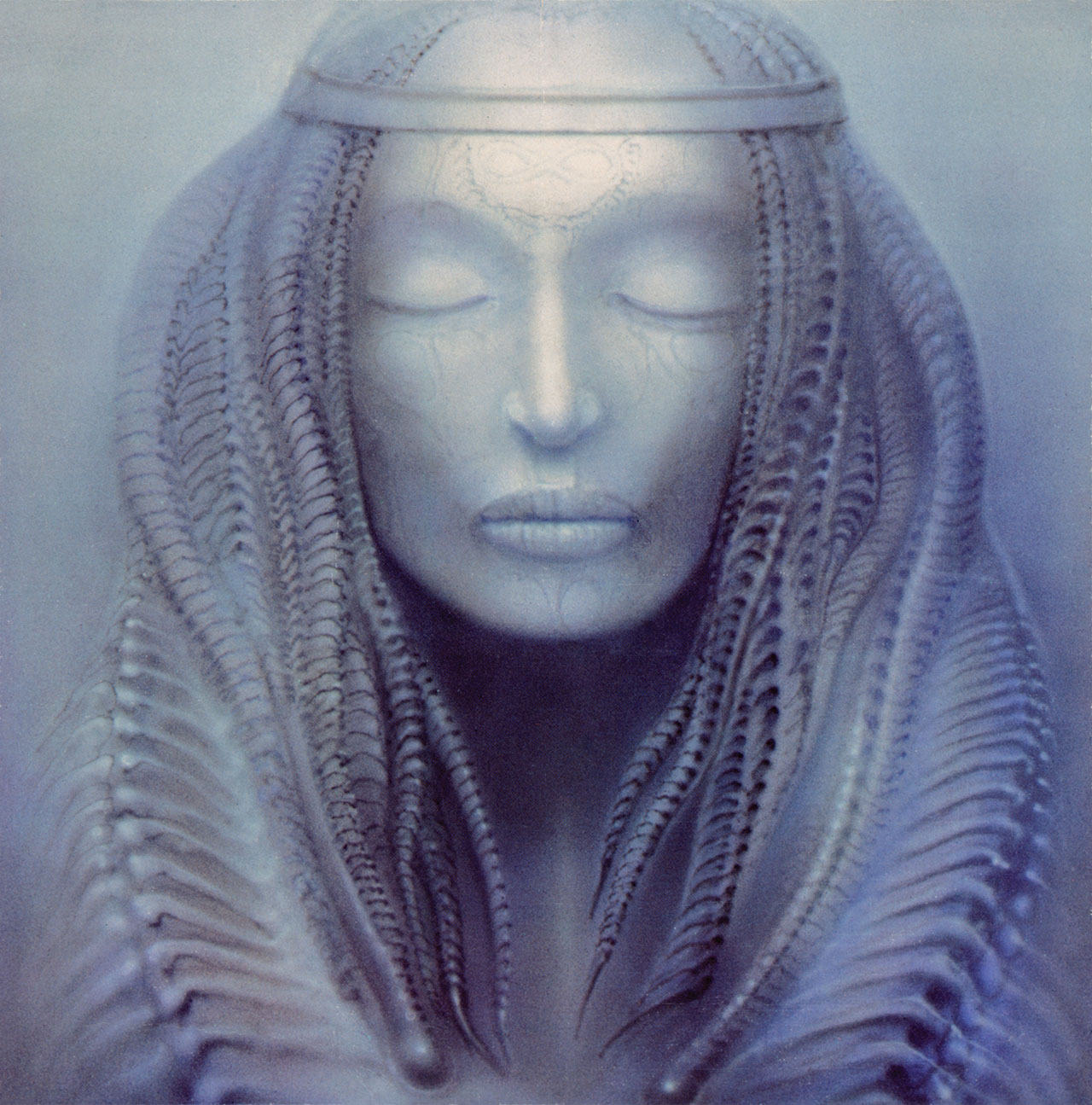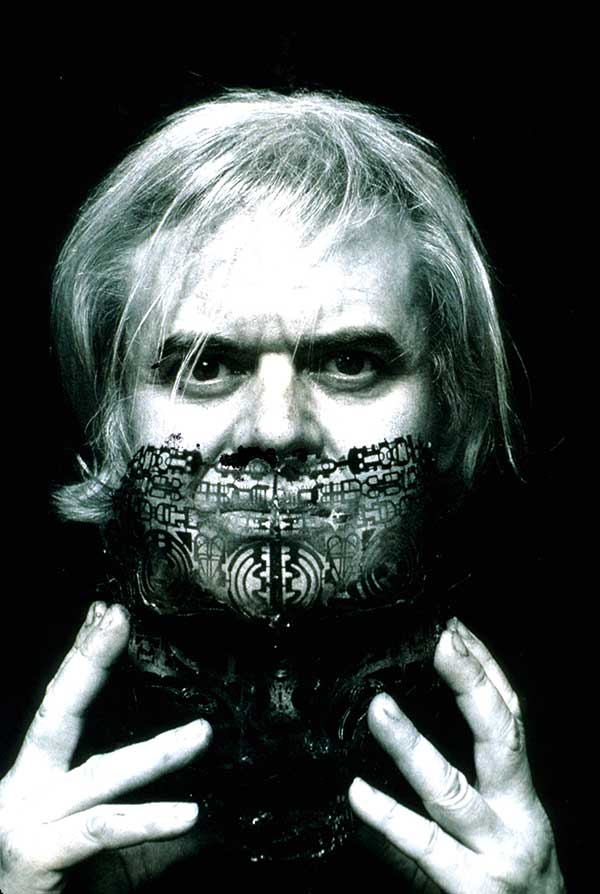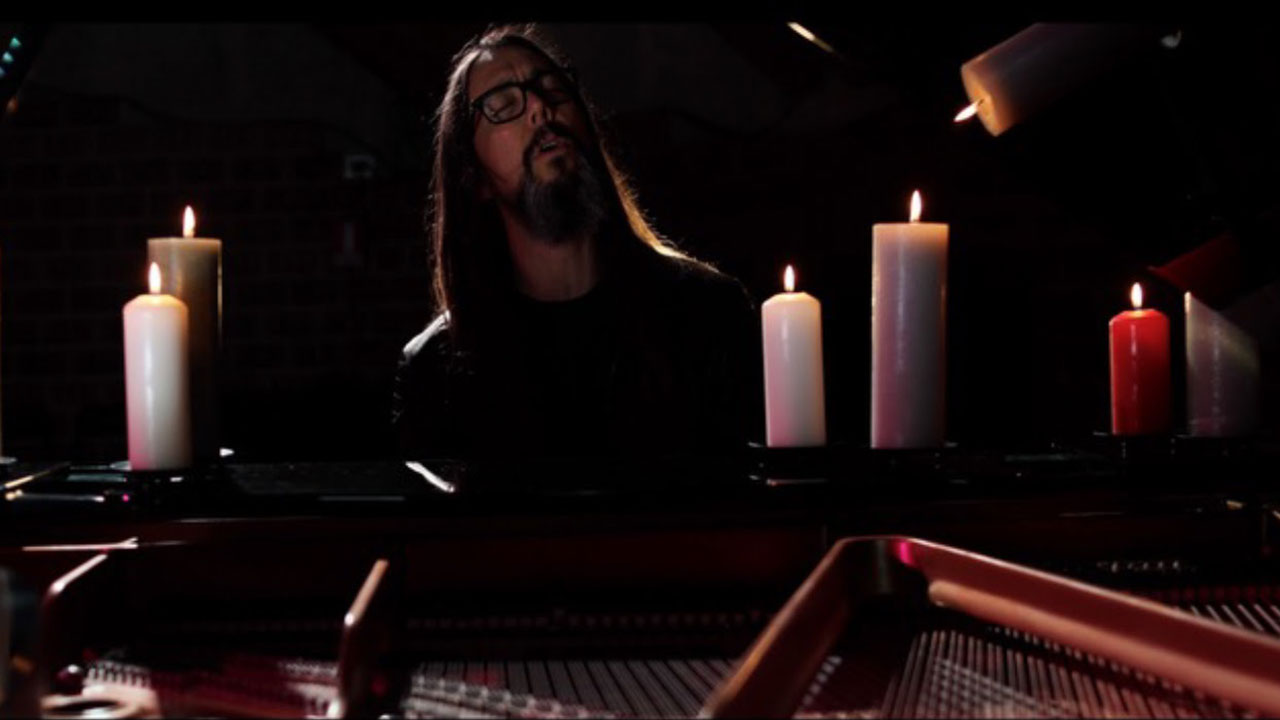How HR Giger and ELP created the Brain Salad Surgery cover
Plus: The strange case of HR Giger and the stolen Brain Salad Surgery artwork

Not only is 1973’s Brain Salad Surgery one of Emerson, Lake and Palmer’s greatest albums (if not the greatest), but it is also one of the band’s most instantly recognisable. Much of this is to do with the striking artwork that adorns the album, the work of Swiss surrealist painter, sculptor, film director and set designer Hans Ruedi Giger, best known for his unique work on the Alien series of films.
The original album came housed in an elaborate design. The outer sleeve featured a piece of Giger’s monochromatic bio-mechanical artwork that boasted a human skull within an industrial mechanism. However in the centre was a circle depicting the flesh-and-blood face that would have covered the skeleton. The original sleeve was split down the middle, both sides opening outwards, revealing underneath a human female face (sometimes rumoured to be the face of Giger’s then-wife, actress Li Tobler) with alien-like hair and various facial markings – assumed to be scars.
The whole effect maintains the complexity, intensity and beauty of the music that is contained within. The pieces, entitled Work #217ELPI and Work #218ELPII were chosen by ELP having visited Giger at his home in Zurich in 1973. At the time Giger had been busy on his Passage series of works and was also involved in creating his Landscapes triptych, which would be comprised of babies, skulls and phalluses – the latter painting would cause a furore in 1986 when, used as a poster in the Dead Kennedy’s album Frankenchrist, it prompted the band and various associates connected to be charged criminally with distribution of harmful matter to minors after a teenage girl had purchased the album.

With ELP on the look out for new artwork for their fourth studio album, their Swiss promoter, Gustav Zumsteg, suggested his friend HR Giger.
“My promoter friend insisted on driving me to Giger’s house,” recalls Keith Emerson. “I remember it was a fairly modest bungalow from the outside – until you went in. The interior décor was overpowering, gothic to the extreme. From floor to ceiling his unique airbrush technique had transformed a simple room into a cathedral. Giger had gone three-dimensional – his toilet had arms coming out, almost engulfing the sitter. I noted the arms had drip-feeds going into them. Other décor consisted of gas masks!”
As is widely known these days, the working title for the LP was Whip Some Skull On Ya, a euphemism for fellatio. Needless to say, this appealed to Giger.
“The obvious thing was to combine lips, penis and skulls,” he explained back in 1991. “Those elements flowed into the picture. Nevertheless, Keith suddenly informed me that the title of the album was going to be Brain Salad Surgery. I was dismayed until he explained to me that this expression, likewise, connoted fellatio.”
Sign up below to get the latest from Prog, plus exclusive special offers, direct to your inbox!
The original album artwork featured a robust phallus, beneath the chin of the lady’s face on the outer sleeve, situated just above the new rounded ELP logo that Giger had also created. Although this was not replicated on the lady’s face on the inner sleeve (the one tastefully used by Prog for this issue’s magazine cover), it nevertheless caused problems for the band with their record company.
“After much deliberation we reluctantly had to appeal to HR Giger to tone down the phallic object in front of the subject’s mouth until it looked like a shaft of light,” says Emerson.
Brain Salad Surgery reached Number 2 on the UK album charts in December 1973 and spent an initial 17 weeks on the charts. Not only does it rank as one of the greatest of all prog rock records, its individual artwork helps map it out, alongside King Crimson’s In The Court Of The Crimson King, Pink Floyd’s The Dark Side Of The Moon and Yes’ Fragile as one of the most instantly recognisable emblems of progressive music.

ELP would go on to greater success with their Brain Salad Surgery world tour, and the resultant Welcome Back My Friends… live triple album.
Giger’s reputation would go from strength to strength. In 1977 he published his first book, Necronomicon, and it was this that was given to film director Ridley Scott during pre-production on the first Alien film, prompting him to hire Giger to produce the artwork and designs for his celebrated 1979 film, and for which the Swiss artist would win an Oscar in 1980.
Giger’s work in the field of music continued unabated too. He worked on Magma’s 1978 album Attahk, Debbie Harry’s Koo Koo album, Danzig’s Danzig III: How The Gods Kill, and Stevie Steven’s Atomic Playboys, as well as designing microphone stands for Korn’s Jonathan Davis. He also formed a strong working relationship with Thomas Gabriel Fischer, designing the cover for Celtic Frost’s 1985 album To Mega Therion, as well as this year’s Triptykon release Eparistera Daimones.
There are two Giger-themed bars in Switzerland, both modelled by the artist and based on the biomechanical style of his Alien. There is one in the artist’s birthplace, Chur, and one in the Giger Museum in Gruyeres. And Giger’s art is always in demand for exhibitions around the world.
Which brings us back to Work #217ELPI and …ELPII. Sadly, the original pieces of art went missing following a retrospective of Giger’s work in 2005 at the National Technical Museum of Prague. Both pieces, measuring 34x34cm without a frame, had been housed at the Giger Museum. Work #217ELPI was owned by Giger’s wife Carmen, who originally had a poster of the work hanging in her bedroom as a teenager, whilst …ELPII was owned by one of the artist’s best friends. Both were on loan to the museum.
The exhibition, Giger In Prague, ran from April 14 to August 31. Following the exhibition’s close it was packed up for a return trip to Switzerland and locked at the museum over the weekend. The work arrived back in Zurich, at Giger’s house, on Tuesday September 6, and was transferred to another truck by two of Giger’s assistants who drove it to the museum in Gruyeres, where it was discovered the two influential pieces were missing.

“At first we were certain the two paintings were taken from the locked storeroom over the weekend after the show was taken down,” Giger’s manager Les Barany told Prog. “The posters put up around Prague hinted as much, but now, five years later, we can’t be certain of that and keep open the possibility that it could have happened at any point between the time the paintings were taken off the wall and the transport was checked against the list at the Giger Museum.”
So then, a modern prog rock whodunnit? Wanted posters for the artwork have, as Barany points out, been on show throughout Europe in the hope that it might shed some light on the paintings’ whereabouts. A reward of $5,000 per painting as well as an all-expenses paid weekend at the Giger Museum is being offered for any information that leads to the successful recovery of the work.
[2020 note: According to Giger's website the ELP artwork remains unfound].
Giger himself decided that, until Work #217ELPI and …ELPII are found, he would hang exact replica copies up at the Giger Museum.
“I hope that Giger feels as proud as I on that landmark of an album cover,” Emerson says of Brain Salad Surgery. “To this day HR Giger’s work remains distinctive in every sense. He’s frighteningly unique.”
This feature originally appeared in the May 2010 issue of Prog.
Writer and broadcaster Jerry Ewing is the Editor of Prog Magazine which he founded for Future Publishing in 2009. He grew up in Sydney and began his writing career in London for Metal Forces magazine in 1989. He has since written for Metal Hammer, Maxim, Vox, Stuff and Bizarre magazines, among others. He created and edited Classic Rock Magazine for Dennis Publishing in 1998 and is the author of a variety of books on both music and sport, including Wonderous Stories; A Journey Through The Landscape Of Progressive Rock.

